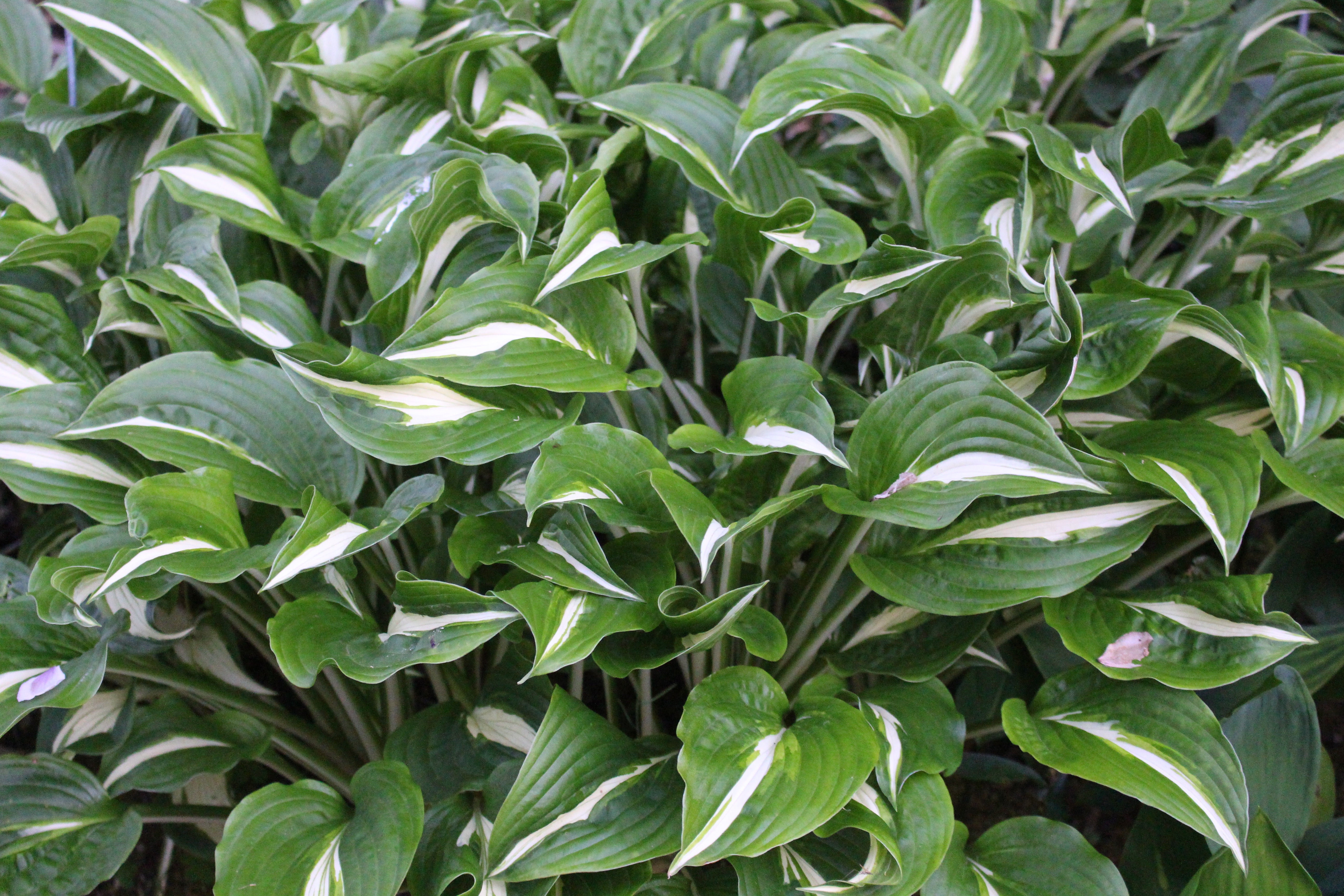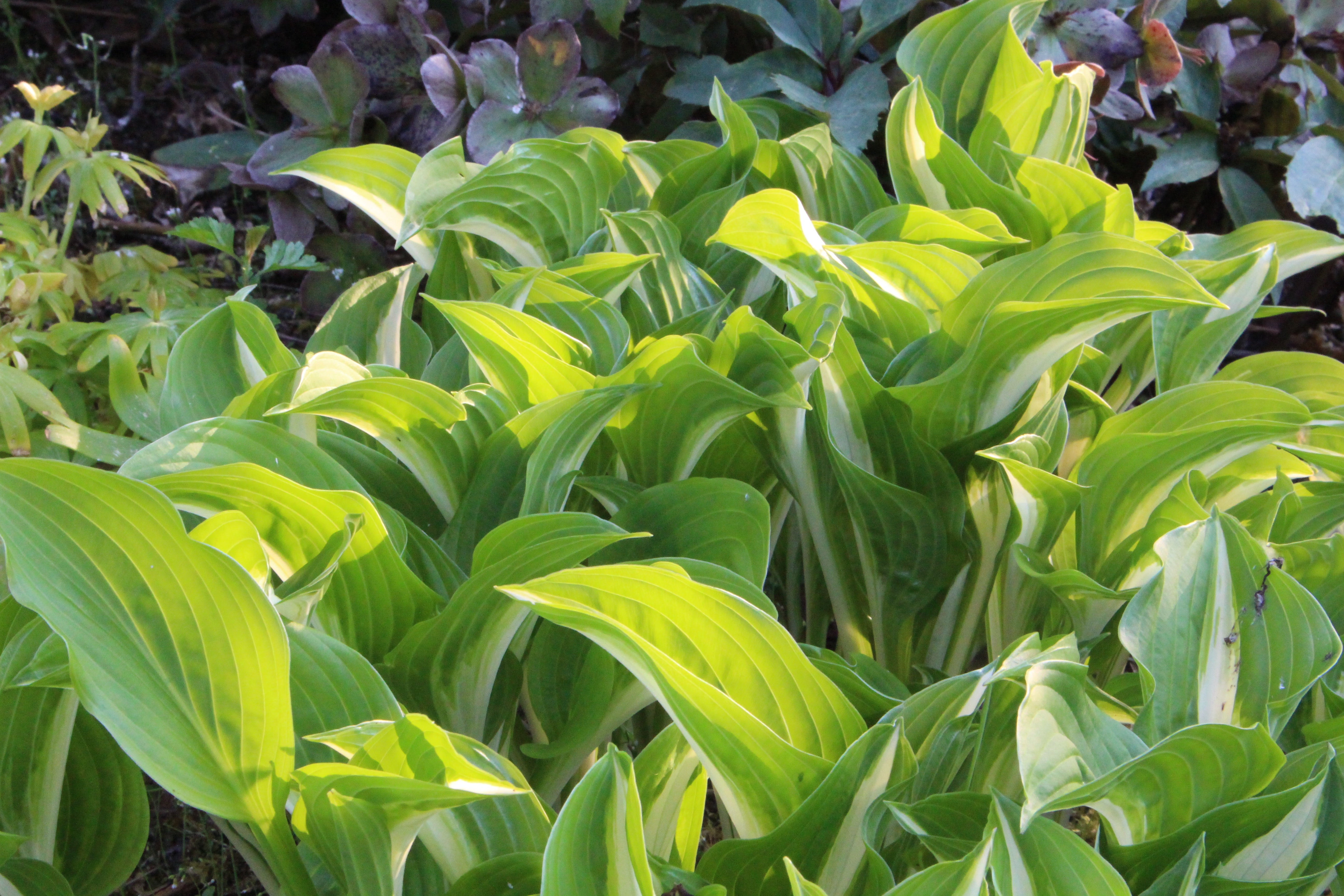Hosta undulata var. univittata (v)
Approx. 0.5 litre pot
About this cultivar:
Hosta undulata var. univittata is a compact herbaceous perennial with ovate, strongly twisted, deep green leaves striped in the centre with creamy-white. Funnel-shaped light purple flowers are borne on stems to 45cm. Know for the wavy leaves (undulata is Latin for wavy). The plant grows anywhere, it tough and therefore ubiquitous! Everyone loves it!
The name is complicated. A cultivar ‘Undulata’ was formerly regarded as a species under the name Hosta undulata. However it is not accepted as a species by the World Checklist of Selected Plant Families as of August 2011, and has been relegated to cultivar status. But now there are groups of undulata types! We’re followed the RHS here which currently breaks down into four separate varieties: var. albomarginata, var. erromena, var. undulata and var. univittata.
I believe var. undulata is the name for the form that has a wider white center than the edge. This makes a smaller clump and it has the most white. However var. univittata has a green edge that is wider than the white strip in the center. This makes a good sized clump as it has more green and is more vigorous.
- Position: Full sun, partial shade, full shade
- Soil: Almost any soil, grows well in Ballyrobert
- Flowers: June, July
- Other features: Grows well in Ballyrobert, Interesting Foliage or Fruit, Suitable for Container, Dappled Shade or Full Shade Loving
- Hardiness: Fully hard, grows well in Ballyrobert, H7 - Hardy in the severest European continental climates (< -20°C)
- Habit: Clump forming
- Foliage: Deciduous
- Height: 30 - 45 cm (1 - 1.5 ft)
- Spread: 75 - 105 cm (2.5 - 3.5 ft)
- Time to full growth: 2 to 5 years
- Plant type: Herbaceous Perennial
- Colour: Green, white
- Goes well with: Cornus, ferns, allium
About this genus:
Hosta (hos-ta) is a genus of plants commonly known as plantain lilies, giboshi, or the old botanical name Funkia. The name Hosta is in honor of the Austrian botanist Nicholas Thomas Host. However most modern plants were introduced from Japan to Europe by Philipp Franz von Siebold in the mid-19th century. Don't worry about Philipp's legacy being forgotten though; he has a species named after him! (Hosta sieboldiana).
Hosta are often touted as the best shade-loving plants for the perennial garden, which is hard to dispute. In cultivation, Hosta readily mutate and have produced thousands of novel colours and leaf forms (blue, gold, and variegated are the most popular). Because of their great foliage Hosta are often thought of as foliage-only plants, but it is worth noting that many cultivars have fantastic flowers - see "Sum and Substance" and "Stained Glass" for example.
You will read that for best performance, Hosta prefer to be out of full-sun. However if you live on these islands it is doubtful you will ever get any full-sun; so you may try them in your brightest spot as long as they have some moisture. You may have had some experience with slugs and Hosta. So have we. We have found that cultivars matter (some are tastier to slugs than others) so we try to grow only slug resistant cultivars or ones that grow so many new leaves the slugs can't keep up. We've also found that, by not using chemicals, little mites that eat slugs eggs multiply and keep the population down - let nature run its course! Some slug-loving-predator should turn up eventually!
How to use Hosta? Well, if you are paranoid about slugs, place the plant in the middle or back of the border where you can only see the upper part of the plant. Slugs don't climb so high so the lower leaves that get slug damaged won't be seen! As for plant partners we put some red stemmed dog-woods near or through them (Cornus), or large leaf-ferns. It is common to put bulbs in and around Hostas; we do it with Allium. But we don't do it with Narcissi or Tulipa; they don't like the competition.




